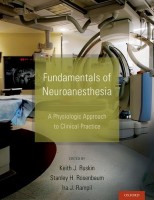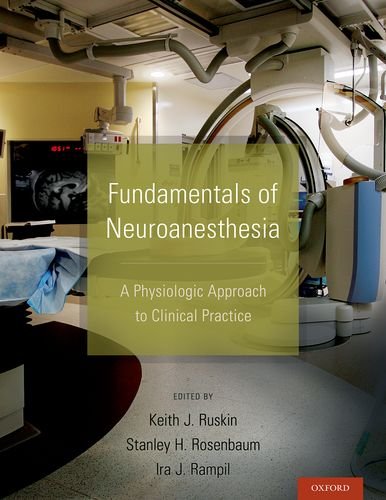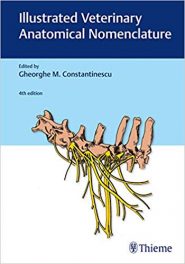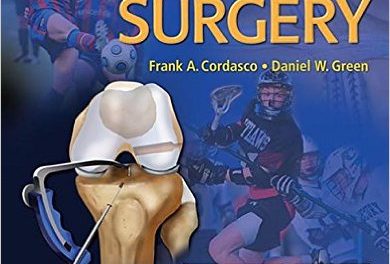 Editors: Keith J. Ruskin, Stanley H. Rosenbaum, and Ira J. Rampil
Editors: Keith J. Ruskin, Stanley H. Rosenbaum, and Ira J. Rampil
Publisher: Oxford University Press – 370 pages
Book Review by: Nano Khilnani
The editors point out at the outset of this book that recent discoveries and advances in neuroscience have enabled neurologists and neurosurgeons to better treat patients who have suffered from a stroke (commonly described as “heart attack in the brain”), a hemorrhage (internal bleeding) and trauma (e.g. a blow to the brain in an accident)
Strokes are not uncommon these days. The main types – ischemic or blockage of blood flow in the vessels due to narrowing; or hemorrhagic or due to escape of blood from the intravascular space – are treatable when discovered early
The editors write: “patients who once would have been considered to have an untreatable neurologic injury are now routinely being scheduled for interventional or surgical procedures, and a campaign has begun to educate the general public about the urgency of seeking treatment when they experience the symptoms of a stroke.”
This book was written to help anesthesia providers in brain and spinal surgeries deal with planned procedures and the unforeseen emergency situations that may arise during an operation.
The two main goals of this book in the words of the editors are:
- To provide the critical information that all anesthesia providers should have, when caring for the neurosurgical patient
- It should contain a thorough and user-friendly review of the anesthetic management of neurosurgical patients
The contents of this book is of basically two main types. The first set of chapters deals with physiology and pharmacology, from the perspective of the neurosurgical patient, while the second set of chapters covers aspects of subspecialty practice.
The first set covers the following subjects, as titles of first 15 chapters
- Central Nervous System Anatomy
- Therapeutic Control of Brain Volume
- Monitoring Cerebral Blood Flow and Metabolism
- Neuromonitoring Basics: Optimizing the Anesthetic
- Cerebral Ischemia and Neuroprotection
- Neuroimaging Techniques
- Pharmacology of Intravenous Sedative-Hypnotic Agents
- Pharmacology of Opioids
- Inhaled Anesthetics
- Neuromuscular Blockage in the Patient with Neurologic Disease
- Fluid Management in the Neurosurgical Patient
- Intracranial Tumors
- Pituitary and Neuroendocrine Surgery
- Anesthesia for Skull Base and Neurovascular Surgery
- Anesthesia for Stereotactic Radiosurgery and Intraoperative Magnetic Resonance Imaging
The second set covers these reaming chapters 16 through 30:
- Awake Craniotomy
- Anesthesia for Posterior Fossa Surgery
- Surgery for Epilepsy
- Severe Traumatic Brain Injury
- Spinal Surgery
- Interventional Neurovascular Surgery
- Carotid Endartererectomy and Carotid Artery Bypass
- Positioning for Neurosurgery
- Airway Management for the Patient with an Unstable Cervical Spine
- Neurosurgery in Pediatrics
- Acute Care Surgery in the Critically Ill Neurosurgical Patient
- Occlusive Cerebrovascular Disease – Perioperative Management
- Neurosurgical Critical Care
- Ethical Considerations and Brain Death
- Quality Management and Perioperative Safety
One of the critical requirements for successful neurosurgery, the editors point out, is that the neuroanesthetist be thoroughly familiar with the anatomy of the central nervous system, so that he or she “can speak the same language as the neurosurgeon.”
Accordingly, the first chapter Central Nervous System Anatomy provides detailed descriptions, along with images of the main sections and subsections of the brain.
Each chapter is well organized. It starts with an introductory paragraph as to what is covered in the chapter; headings and subheadings of topics and explanations, plus images and tables; a Conclusion, and a list of References.
The physicians and other experts from the United States and Germany, Switzerland, and the Netherlands and the three editors named below contributed well-researched and up-to-date material to this book to make it a truly unique and outstanding contribution to the study and practice neuroanesthesia.
Keith J. Ruskin, MD is Professor of Anesthesiology and Neurosurgery, Director of Neuroanesthesia in the Department of Anesthesiology at Yale School of Medicine in New Haven, Connecticut.
Stanley H. Rosenbaum, MD is Professor of Anesthesiology, Medicine and Surgery, Vice Chair for Academic Affairs, and Director of Perioperative and Adult Anesthesia in the Department of Anesthesia at Yale School of Medicine in New Haven, Connecticut.
Ira J. Rampil, MD is Professor of Anesthesiology and Neurologic Surgery at the State University of New York at Stony Brook in Stony Brook, York.







